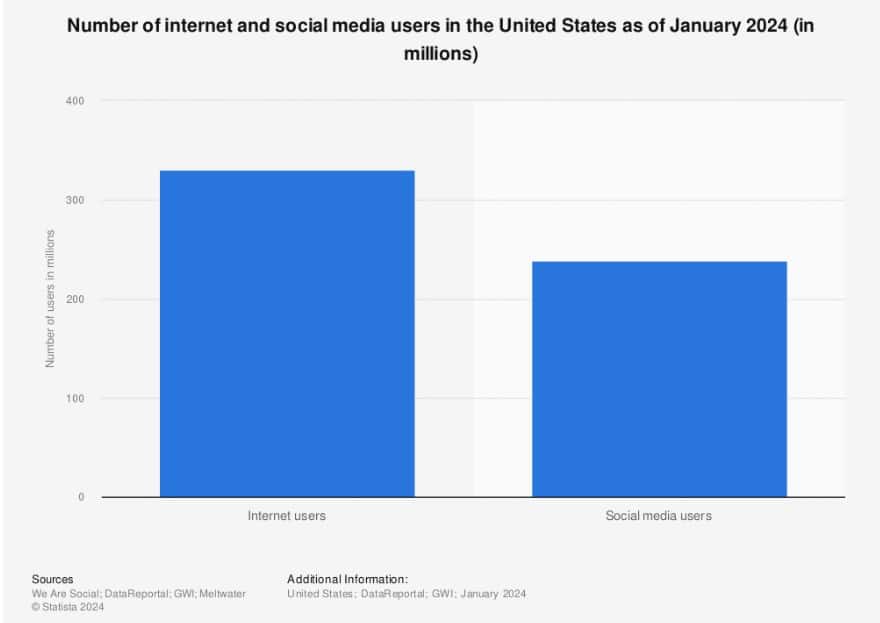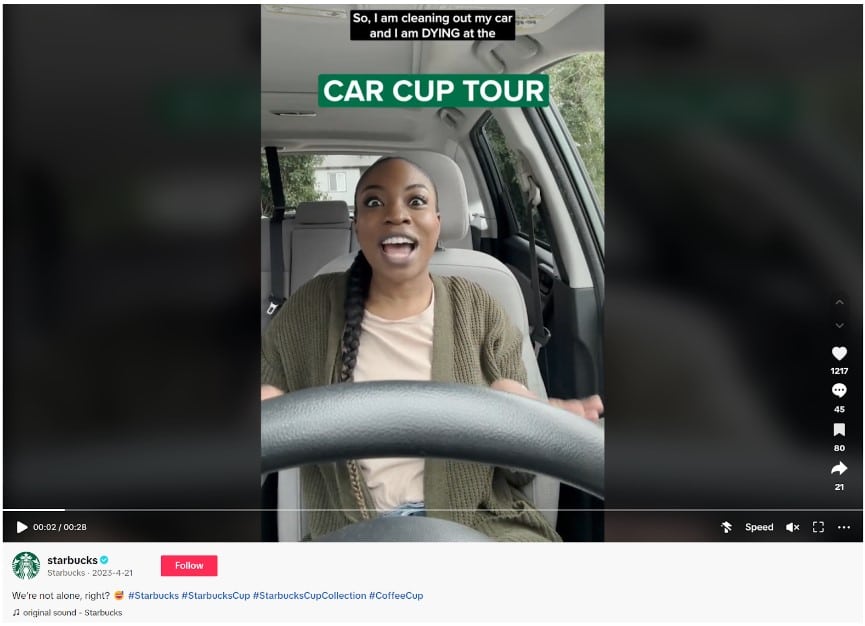When online marketing took off, businesses found that it offered them an easy way to reach a wider target audience. Today, there are over 1.1 billion websites, with 252,000 new ones created daily. To avoid getting lost in the competitive ocean of the Internet, many businesses are starting to target local audiences to find potential customers. How? Through hyperlocal social media marketing tactics.
Regardless of the size of your company, you can bring a hyperlocal presence to your content that rises above the crowd. Social media platforms present a simple, cost-effective channel to harness hyperlocal marketing—keep reading to find out more.
Understanding hyperlocal social media marketing
Hyperlocal social media marketing is aimed at a specific target audience based on a precise geographic location. A hyperlocal area may be a neighborhood or section of a town. In extreme cases, hyperlocal tactics could even target a few city streets.
The audience segment typically has shared interests and values, so a hyperlocal strategy attracts like-minded people through highly tailored content with calculated timings.
Why are hyperlocal marketing strategies important?
According to Statista research, there are 331 million internet users in the US. Over 72% of them are social media users. A hyperlocal social media approach ensures you target active users with relevant content. It also helps you cut through the noise of millions of other brands posting on social media every day.
Hyperlocal marketing on social media can benefit all types of companies across all sectors – from a B2B startup selling the latest hosted VoiP for business solutions, to a large clothes retailer looking to increase sales at a particular location.

Image sourced from statista.com
By implementing these focused strategies, you can make your SaaS company stand out in its respective local or niche market, distinguishing it from competitors.
The benefits of hyperlocal social media tactics
Hyperlocal social media marketing requires a carefully planned implementation. When you get things right, you’ll be rewarded with many benefits, including:
- Capture new audiences – targeting small areas brings in local potential customers who may go unnoticed otherwise.
- Stay relevant – landmarks and cultural references appeal to local users.
- Engage with your target audience – consumers who are geographically close to you are more likely to want to know about your product or service.
- Achieve better ROI from advertising – social media marketing is low cost and reaches interested leads. However, navigating social media content moderation ensures that your campaigns remain compliant with platform rules and regulations, avoiding disruptions.
- Build customer loyalty and trust – showing you’re part of a hyperlocal community helps to build consumer trust.
- Personalize the customer experience (CX) – give consumers the personalized content they desire and expect from local brands.
- Increase foot traffic – hyperlocal customers are more likely to visit your physical stores.
- Improve conversion rates – personalized, targeted campaigns across a range of social media platforms generate better social media leads.
Utilizing eCommerce analytics can further refine these campaigns by providing detailed insights into consumer behaviors and preferences within specific local areas, leading to even higher engagement and conversion rates.
10 tips to create a hyperlocal social media marketing strategy
Building a hyperlocal social media marketing strategy doesn’t have to be difficult. The concept itself is simple enough. Just build campaigns that appeal to the interests of your targeted audience, right?
Why don’t you follow these hyperlocal social media tips and make it easy for yourself?
1) Use geotagging and hashtagging
Most social media platforms come with built-in ways to target hyperlocal audiences. These are based on geotags and hashtags:
- Geotagging adds location data to your social media post such as a neighborhood, city, or landmark. This metadata helps the platform boost visibility to users in the tagged area. Users can either look for local content or be targeted by the algorithm based on their location. Geotagging is available on many social media networks, including Instagram, Twitter, and Facebook.
- Hashtagging lets users easily filter and search for relevant content. While they are commonly used to tag brands, users, and topics, they can also be used to tag local areas or points of interest. You can also create your own hashtags and promote hyper-local campaigns.

Image sourced from later.com
2) Use geo-targeted advertising
As we’ve just seen, geotags are a built-in feature that boosts organic social media marketing. So, why not use this to reach specific audiences with geo-targeted ads on platforms like LinkedIn and Instagram?
First, add the location metadata to your post through geotagging. Next, use the platform’s marketing tool to create specific criteria for the ads. In our case, target your ad campaigns users based on locality.
For hyperlocal marketing, you can create ads for users within a 1-2 mile radius of your desired location. You can personalize similar ads to reach different areas of the same city.
For example, let’s take Los Angeles. You have one location in West Hollywood and one in Koreatown. Create slightly different, personalized ads for each area. You can then run them in the same campaign with geo-targeted advertising.
Not sure how to create such content? You can try and find some inspiration by using ChatGPT or another large language model.
3) Promote user-generated content
With hundreds of millions of social media users, why not let them create hyperlocal content for your brand? A recent survey found that 89% of consumers trust product recommendations from family and friends, which demonstrates just how powerful others’ opinions are in influencing our buying choices.
You can use hashtags and campaigns to promote user-generated content. A classic example of this was the #StarbucksCup campaign on TikTok. The promotion encouraged users to show how and where they use their coffee cups. Take inspiration from this idea and base it around a hyperlocal hashtag.

Image sourced from tiktok.com
4) Collaborate with local businesses
You don’t have to view every local business as your competition. Oftentimes, you’ll get better footfall to your physical stores if people have more than one reason to visit your area. Pair up with neighboring businesses to collaborate on a social media content strategy.
For example, a specialty beer shop might cross-promote with a burger joint next door. Both businesses can encourage users to come on down for a tasty meal and to quench their thirst with an artisanal ale.
5) Work with local influencers
Social media influencers let you look to professionals for user-generated content. No matter what part of the city you’re in, you can be sure there will be local influencers. Influencers are a great way to build credibility. The Edelman Trust Barometer found social media influencers increased trust for at least 27% of users aged 18-43.

Image sourced from edelman.com
Use powerful tools such as Hootsuite and sales CRM tools to track hyperlocal hashtags and manage customer relationships effectively. While Hootsuite provides insights into tag engagement, a sales CRM can help you maintain detailed records of customer interactions and sales within those specific areas. This enhances your hyperlocal strategy with data-driven decision making.
Another important consideration about influencers is that they aren’t the only remit of skincare, fitness, or fashion brands – virtually any brand can benefit from an influencer promoting their products or services.
Take the tech industry, for example. If you are a newly founded IT startup looking to gain traction with local businesses, why not have a tech or B2B influencer explain to their audience something complex like Snowflake Schema examples in a fun, simple, and catchy way?
6) Engage with community events
You can engage a hyperlocal audience by linking your social media content to community events and activities. Take part in local initiatives like fundraisers, festivals, conferences, and professional sports teams. Utilizing volunteer management software can help organize and manage volunteers for these events, ensuring smooth operations and maximizing community engagement.
Find these activities on social media and engage with them through tags, comments, and replies. Reaching out also generates opportunities for collaboration such as a product stall at a festival.
In the following example, fashion retailer Kotn announces its pop up for a local event.

Image sourced from vistasocial.com
By associating yourself with a local happening, you will build trust and credibility with local users.
7) Feature local faces
Do you know who relates to a target neighborhood better than anyone else? The people who actually live there.
Build social media campaigns around the locals who frequent your business. Hyperlocal users will recognize familiar faces. You’ll gain instant credibility and foster a stronger relationship with the local community.
Brightwater Clothing in Minnesota, for instance, built a campaign around telling the stories of its local customer.

Image sourced from instagram.com
Friends and followers of featured customers will be more likely to engage with and share your content.
8) Localize your content
Localizing your content is another pillar of a solid hyperlocal social media strategy.
If you plan on targeting more than one neighborhood or section of a city, create customizable content and messaging templates. Leave enough blanks to fill in so that each post feels unique and speaks to a hyperlocal audience.
When it comes to localizing content, follow these basic steps:
- Identify and understand your target audience
- Learn more about the local trends
- Use local language, such as slang and references
- Center visuals around local people and landmarks
- Don’t forget geotags and hashtags.
Follow those rules, and you’ll always come up with unique, hyperlocal social media content. You can also use content intelligence tools content intelligence tools and a social media post generator to personalize social media content in real-time.to personalize social media content in real-time.
9) Use visuals featuring local landmarks
Visuals are important for all forms of marketing, including social media campaigns. When creating graphics or featuring images, be sure to include local landmarks or references to the neighborhood.
You can do this subtly by having a local building or street sign in the background of a product image. Combining hyperlocal written content with focused visual content can help you reinforce your marketing message. It’s a message that says, “We’re so close by, we’re the same as you, come check us out.”
10) Keep your social listening local
Social media listening tools such as Sprout Social are a must for marketers. They enable you to track your mentions, replies, trends, and online reputation. They also track hashtags for you. Use this feature to find out what people are talking about in targeted areas. Create compelling social media content and add trending hashtags to boost engagement.
Use hyperlocal social media marketing to reach your audience
People spend increasingly more time on social media. They get on there for shopping, entertainment, and conversation. Most importantly, they want to be engaged with relevant content that feels personal to them.
By setting up a hyperlocal social media marketing strategy as shown in this guide, you can captivate your target prospects in a more authentic, meaningful way. Focusing on small areas will allow you to foster greater trust and customer loyalty with those you reach.
So, what are you waiting for? Get started on your hyperlocal social media marketing strategy today!




